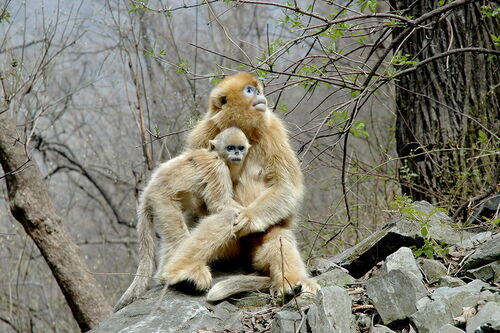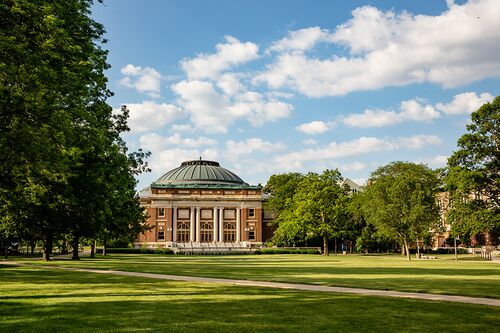Searching for an ancient Maya pilgrimage path: Fire and water
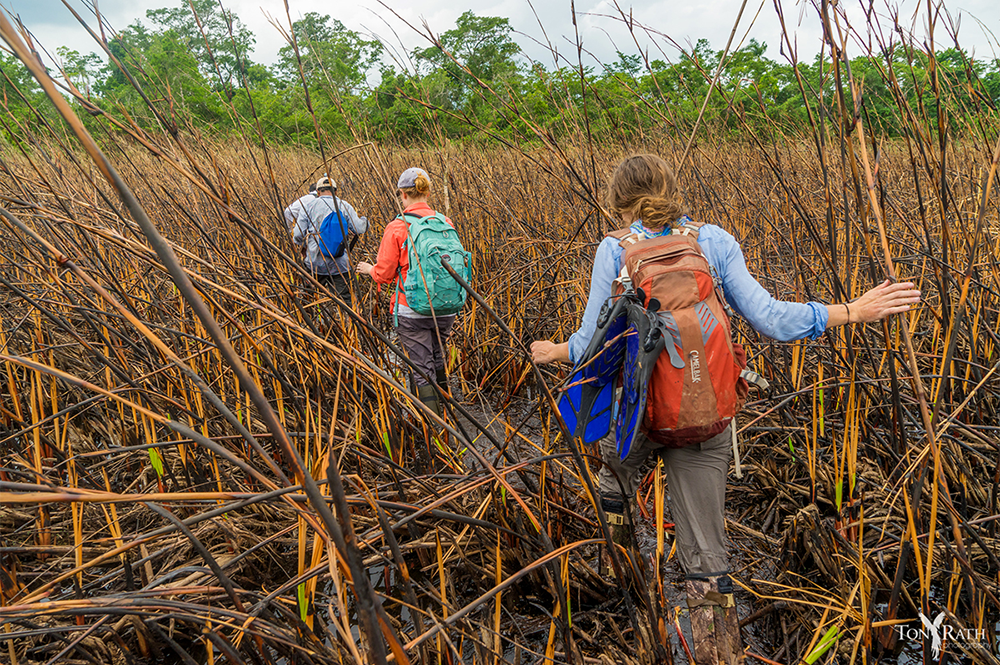
Subscribe to Behind the Scenes for short blog posts, photos and videos from Illinois faculty, researchers, students, and staff members about their work and lives. Send an email with “SUBSCRIBE BTS” in the subject line.
CARA BLANCA, Belize — It is our final day in the field and we are searching for the last of the ancient Maya ceremonial pools, Pool 25. Mud sucks at our boots as we wade through a jungle swamp. The sap from black poisonwood trees (Metopium brownie) burns our skin. Spike-covered trees snag us, while others swarm with ants. The grassland around this last pool should be a welcome relief.
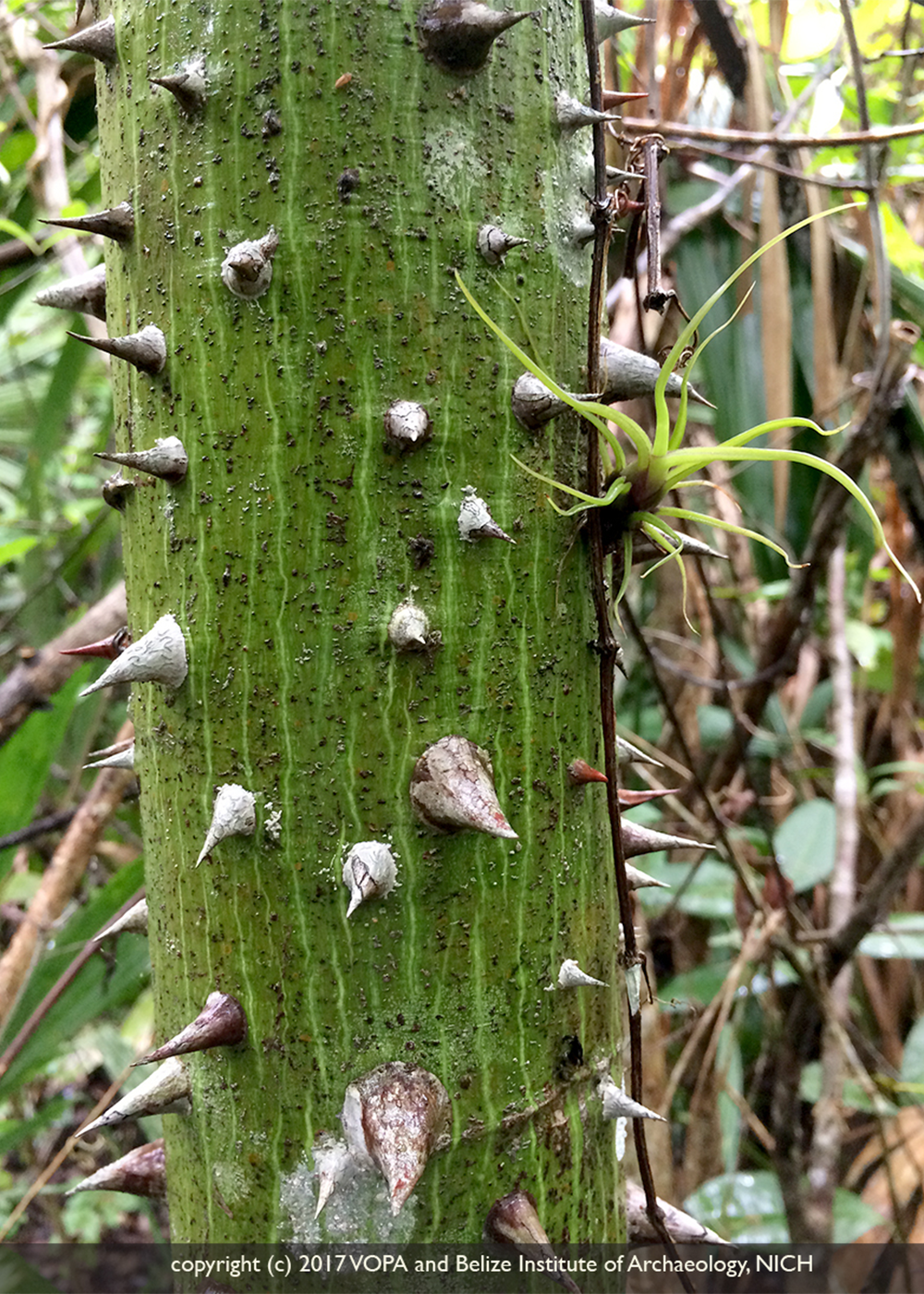
At the edge of the jungle, however, we are met with cutting grass, aptly named for its razor-sharp edges, rising well above our heads. The knee-deep water hides holes that catch us unaware.
Our machete-wielding companions cut a path through the grass, which gives way to burnt stalks. Poachers, who target the land around the pools because of its rich biodiversity, likely started the fire that blackened this landscape.
On this expedition, we have already found and explored Cara Blanca pools 22 and 23, increasing our count to 24 of a total of 25 that we know are here (see “The Elusive Pools.”)
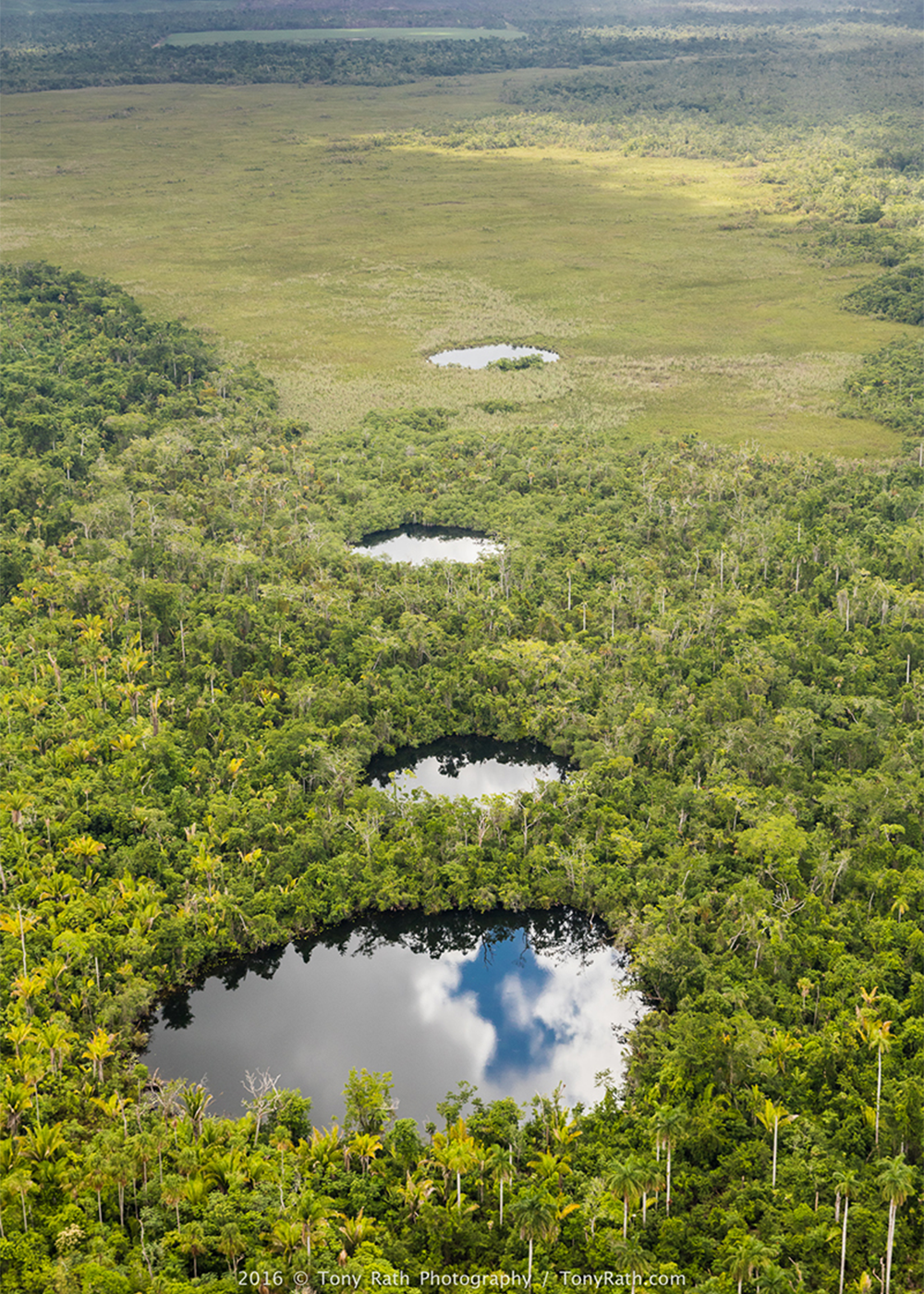
As we finally draw near, Pool 25’s circular blue expanse stands in stark contrast to the scorched landscape around it, and we understand its magnetism. The circular sinkhole is perfectly round, the ideal threshold between the underworld and the upper world. When swimming in the pool, it is impossible to ignore the frigid pockets of water feeding this oasis from beneath, as if imploring us to explore more deeply.
We do not find any more artifacts or architecture during this survey, but we do gain a better understanding of the pains the ancient Maya took to get here. If these pools were part of a ceremonial circuit, as we suspect, we need to understand what the ancient Maya did here – not only at the pools but in the spaces between them.
Each pool also offers the opportunity to collect information about the paleoclimate in the form of fossilized plant remains and the chemical composition of the soils. Reconstructing local and regional environmental shifts lets us better understand the links between ritualized material culture and changes to the landscape.
In future seasons, we will continue to explore the Cara Blanca pools as a space sought out by the Maya for its connection to the underworld during a period of social and climatic turbidity, between 800 and 900 A.D. Further exploration will allow us to continuously re-envision this vibrant and changing landscape’s long and diverse history.






